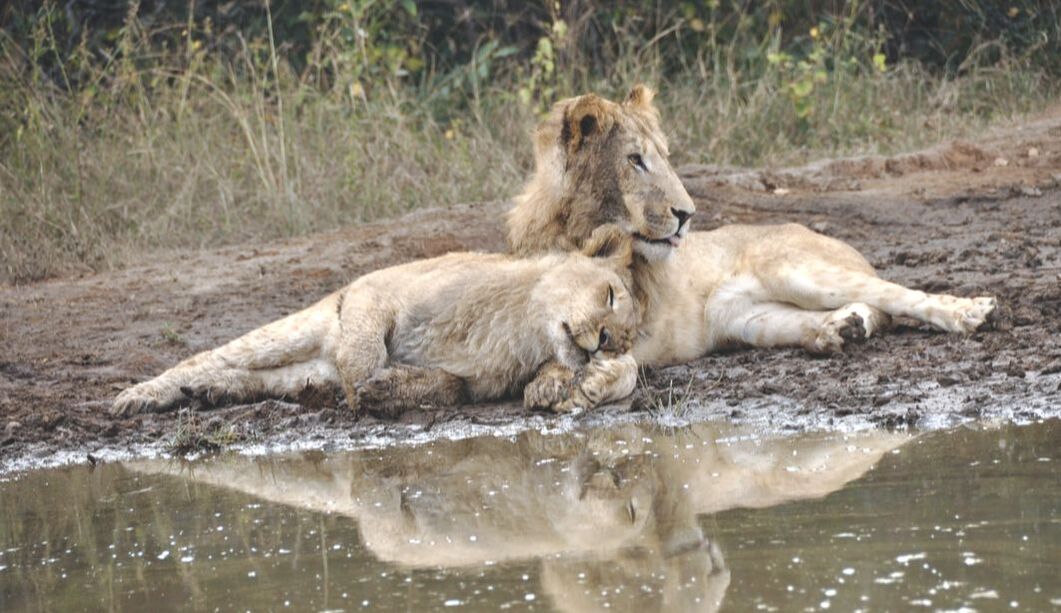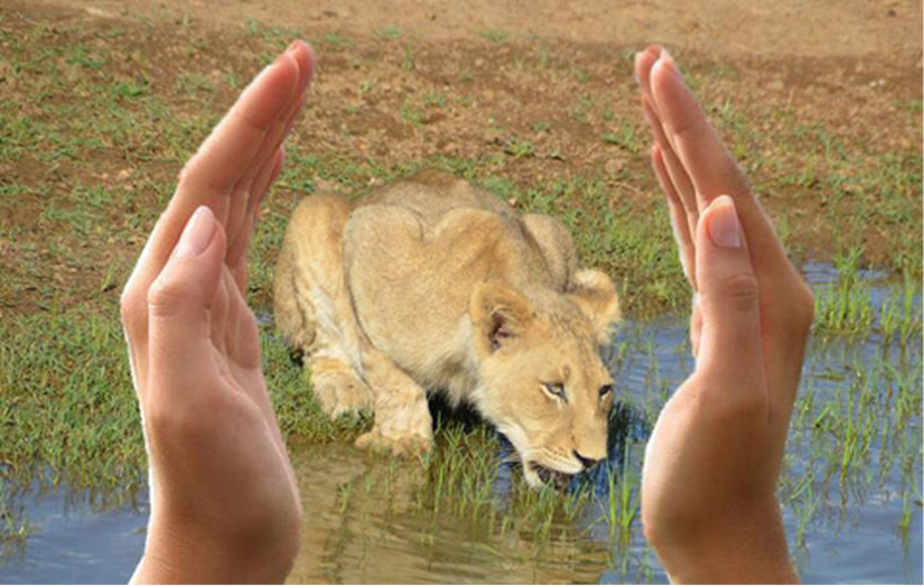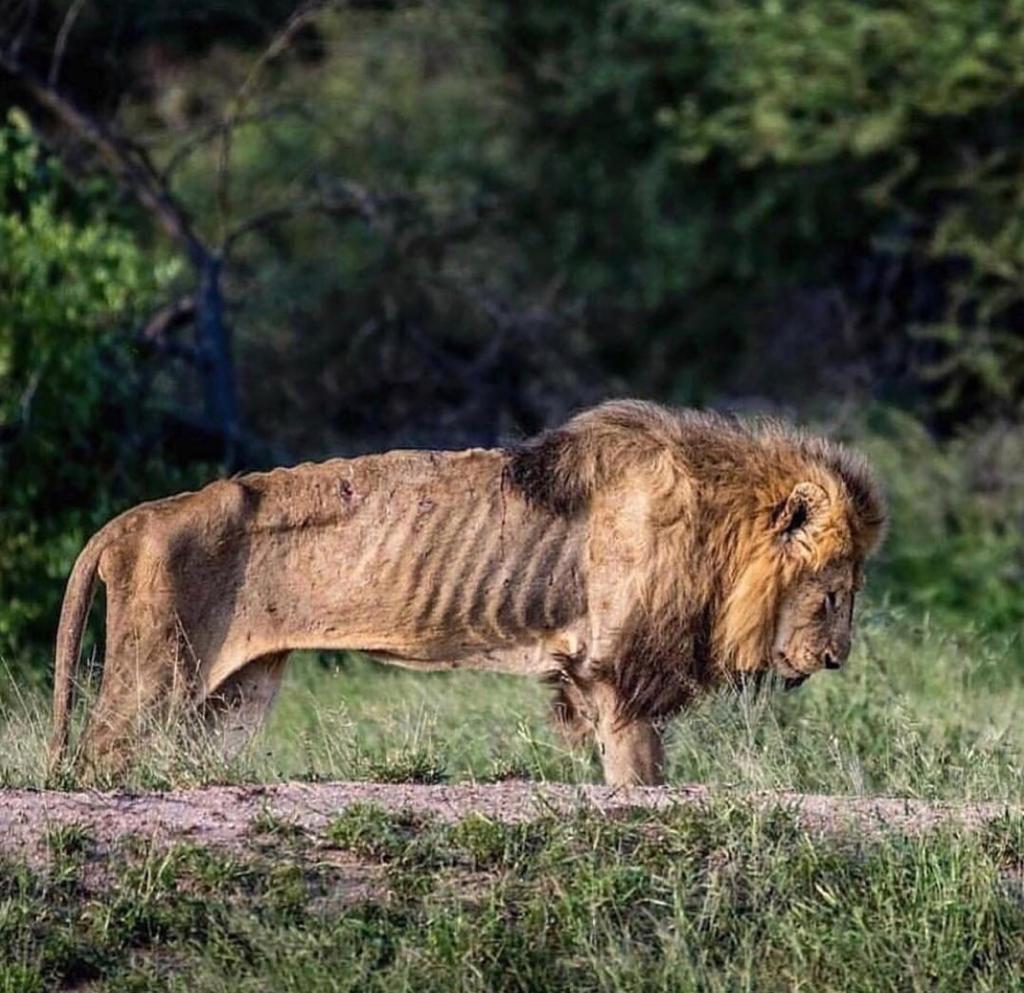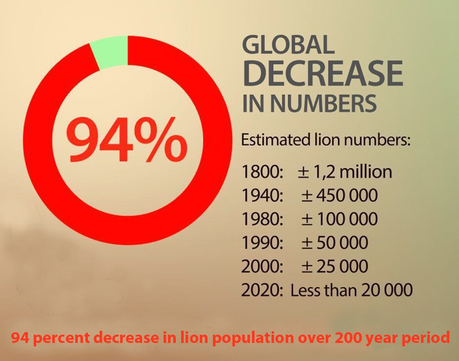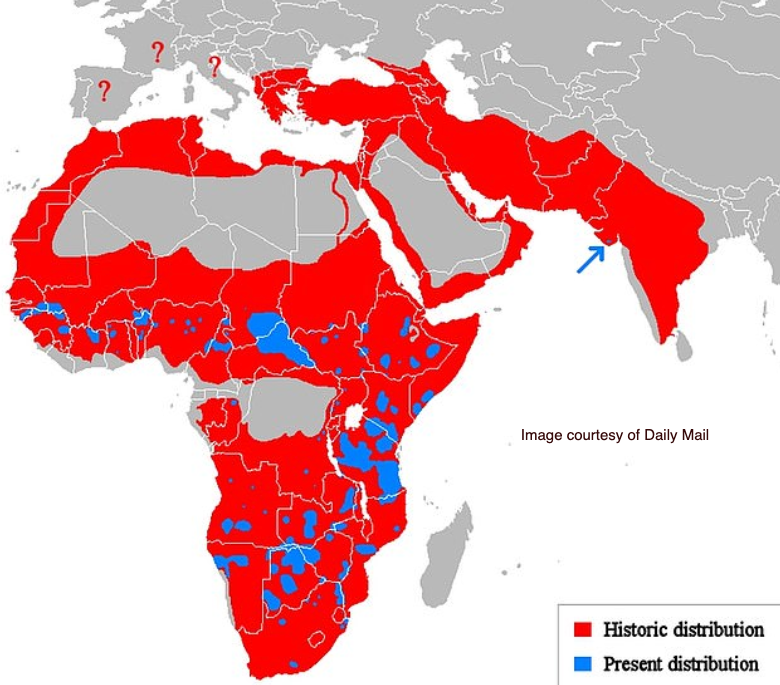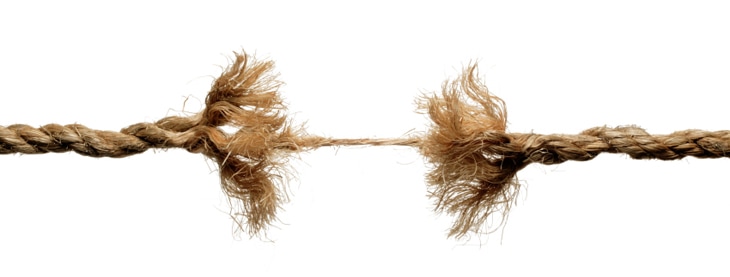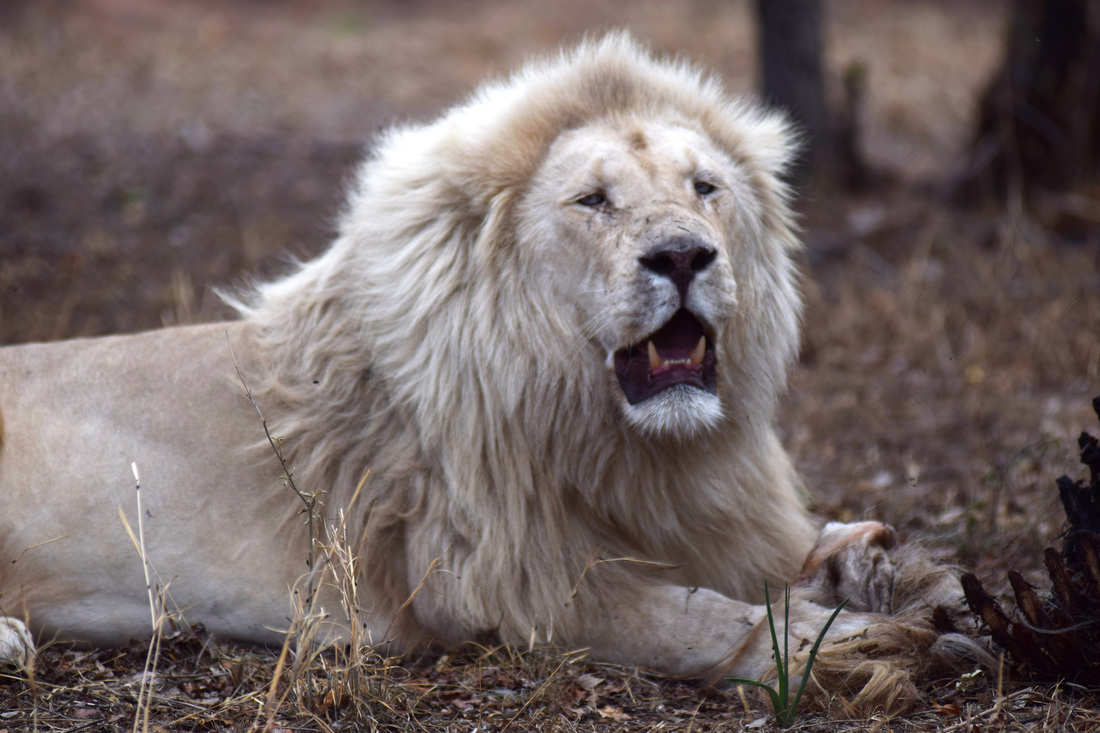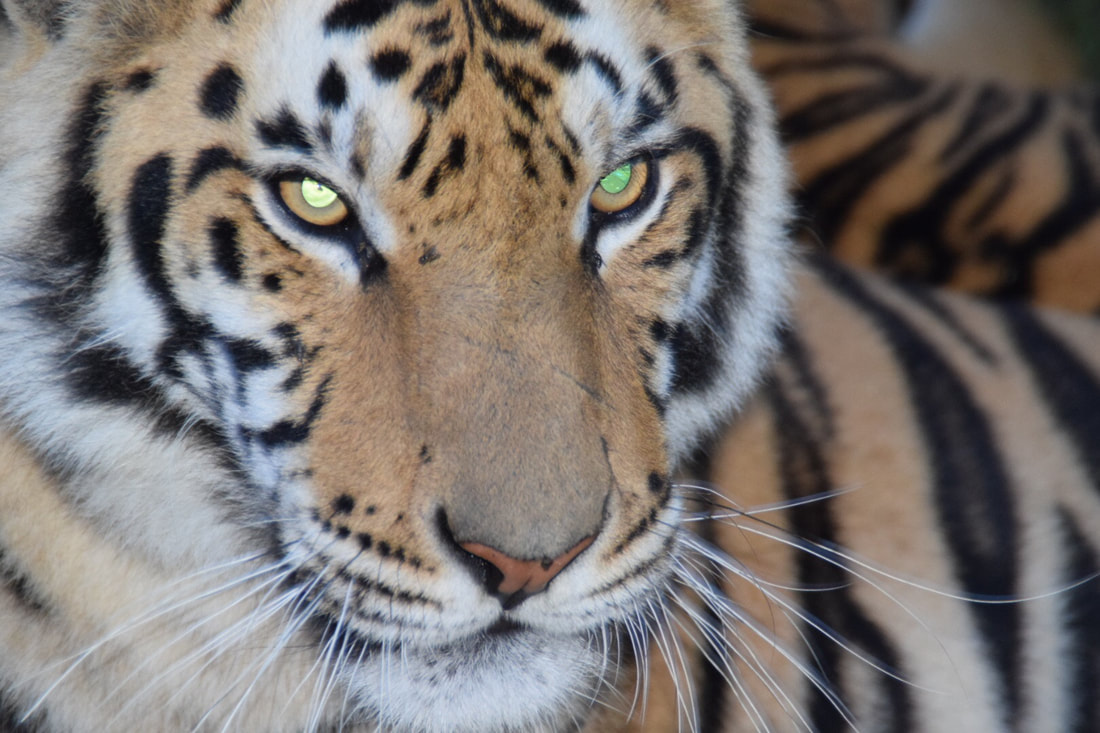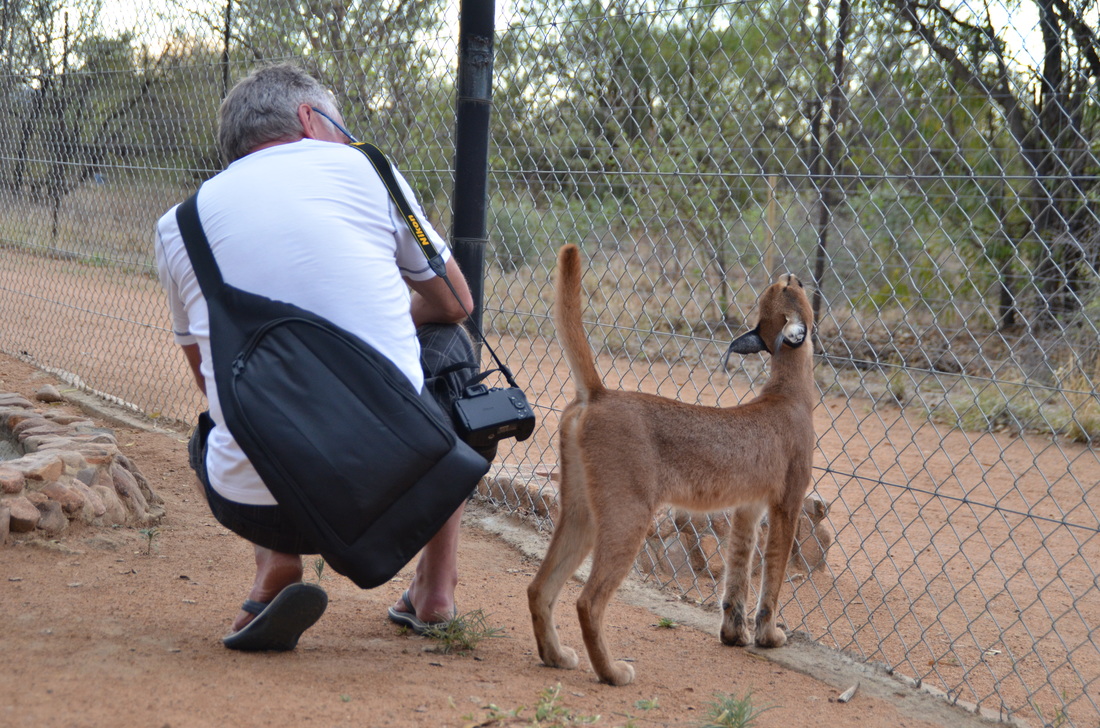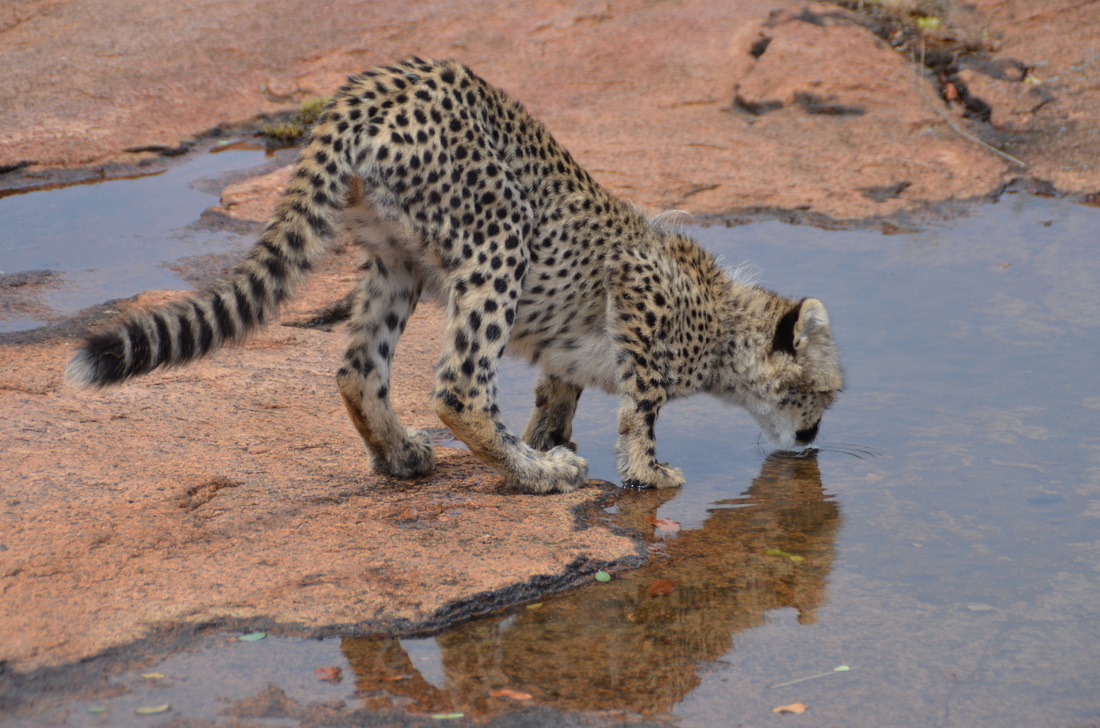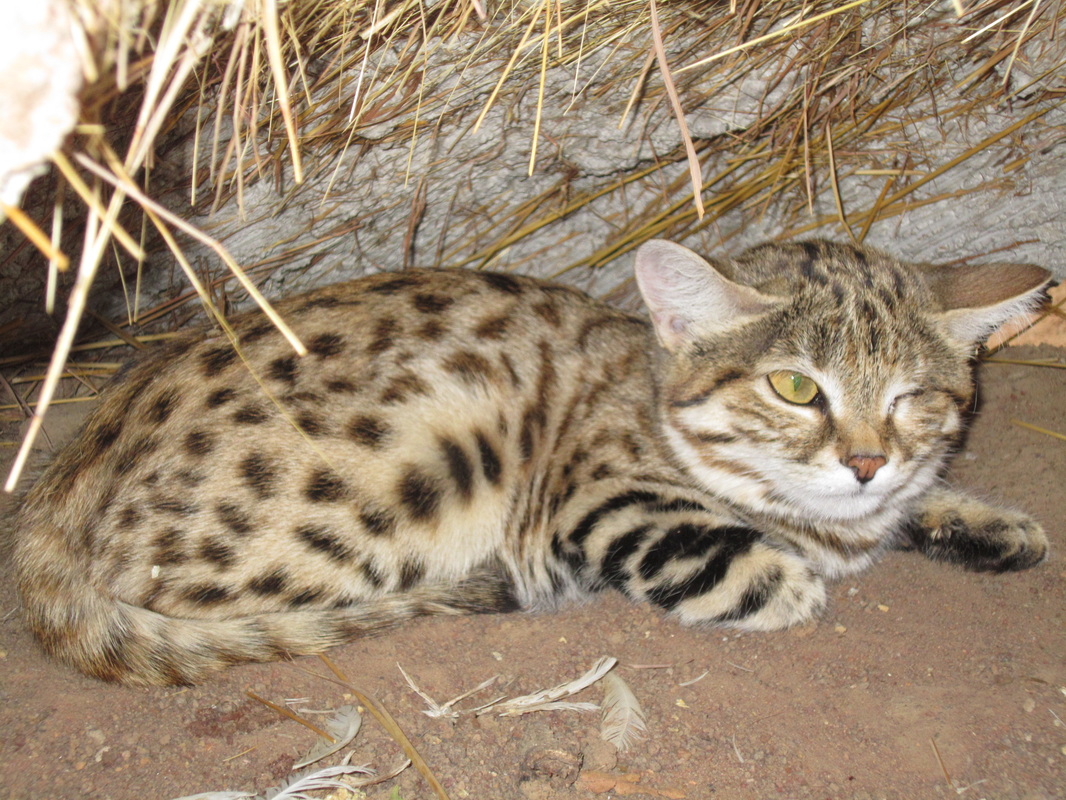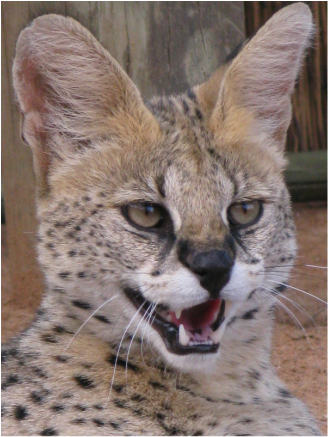by 2035, will this photographic memory be all that we have?
the crisis
Imagine all lions, tigers and cheetahs gone by 2035! This is an historic projection by conservationists. Shocking as it may sound, this anticipation may now already prove far too conservative for even the most optimistic conservationists.
The cause? Humans.
The cause? Humans.
Read more....
For the first time in the history of this earth, the human species has managed to create an environment where mass species extinction is imminent - the emergency has been amplified by the crisis of the Covid 19 pandemic. How could this virus affect the many endangered species? The focus of man's attention and resources has shifted entirely to the development of vaccines. Funding for research and development for the survival of endangered species has been suspended in large part, accelerating all projections that have been made regarding the destruction of these animals.
As the human population of more than 7.7 billion grows and unsustainable practices continue, there is increasing encroachment on the habitats of already endangered species. As ecologist Craig Packer at the University of Minnesota says, "The world is losing its spaces". Habitats for large, top-of-the-food-chain animals are becoming increasingly fragmented and isolated from each other, meaning that we will continue to witness precipitous declines in species populations as the gene pool shrinks. If this is a crisis now, imagine what it will be like in another 80 years when the United Nations estimates that the human population is expected to reach 11 billion!
Sadly, an additional impact may have come from a human initiative that is supposedly fighting for the survival of animals. Many have been swayed by the intransigent philosophy and emotionalism of activists who are of the opinion that there is only one solution - wild animals belong in the wild and never should they be bred in captivity. Their efforts are unyielding and persistent in attacking the efforts of the sincere to preserve species in captivity, at the same time criticizing academics and scientists involved in captive research. "The species is breeding or doing perfectly well in the wild and requires no human intervention," they say, yet the decline in world numbers and rapid extinction is happening exactly there - in the wild! Could it be that this philosophy is just another contributing factor in the rapid extinction of endangered species? History will tell. But there HAS to be room for multiple approaches to the crisis, including captive breeding programs such as those in notable zoos and Ukutula. It is incumbent on the reader to ensure that conclusions reached are based on fact, science and truth. Regrettably, activists stop at nothing to realize their intentions, including lies on social media and production of documentaries void of fact but loaded with fictitious accusations to maximize on sensationalism (in the process drawing substantial donations)
We just cannot afford to lose any single one of these precious species. One loss will have a ripple effect across many other species.
As the human population of more than 7.7 billion grows and unsustainable practices continue, there is increasing encroachment on the habitats of already endangered species. As ecologist Craig Packer at the University of Minnesota says, "The world is losing its spaces". Habitats for large, top-of-the-food-chain animals are becoming increasingly fragmented and isolated from each other, meaning that we will continue to witness precipitous declines in species populations as the gene pool shrinks. If this is a crisis now, imagine what it will be like in another 80 years when the United Nations estimates that the human population is expected to reach 11 billion!
Sadly, an additional impact may have come from a human initiative that is supposedly fighting for the survival of animals. Many have been swayed by the intransigent philosophy and emotionalism of activists who are of the opinion that there is only one solution - wild animals belong in the wild and never should they be bred in captivity. Their efforts are unyielding and persistent in attacking the efforts of the sincere to preserve species in captivity, at the same time criticizing academics and scientists involved in captive research. "The species is breeding or doing perfectly well in the wild and requires no human intervention," they say, yet the decline in world numbers and rapid extinction is happening exactly there - in the wild! Could it be that this philosophy is just another contributing factor in the rapid extinction of endangered species? History will tell. But there HAS to be room for multiple approaches to the crisis, including captive breeding programs such as those in notable zoos and Ukutula. It is incumbent on the reader to ensure that conclusions reached are based on fact, science and truth. Regrettably, activists stop at nothing to realize their intentions, including lies on social media and production of documentaries void of fact but loaded with fictitious accusations to maximize on sensationalism (in the process drawing substantial donations)
We just cannot afford to lose any single one of these precious species. One loss will have a ripple effect across many other species.
"Its not whether animals will survive, it's whether man has the will to save them"
Anthony Douglas Williams
The new "wild" - elephants browsing in Pilanesberg National Park, home to the Big Five, including lions while a taxi drives by within a short distance (see one of 11 causes of extinction for lions - pollution, including noise)
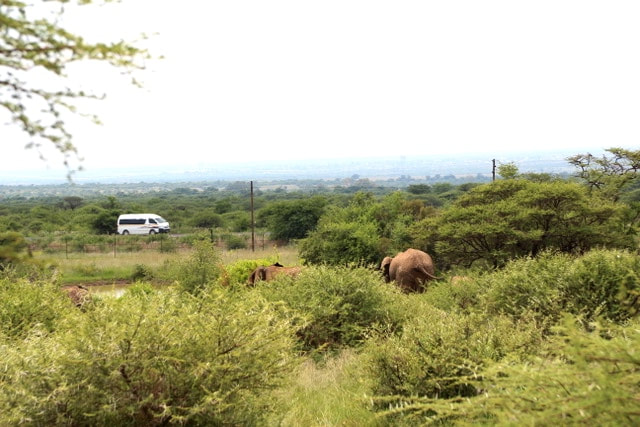
Everything on earth is inextricably linked. The demise of one species directly impacts another and destroys the balance in nature, extending to plant, bird and insect life. Dr. James G. Dyke, Lecturer of Complex Systems Simulation with Geography at the University of Southampton in the U.K. covered this topic in an article dated June of 2015 entitled "Earth's sixth mass extinction has begun, new study confirms". He provides a vivid illustration of the situation:
"The relationship between species diversity and ecosystem function is very complex and not well understood. There may be gradual and reversible decreases in function with decreased biodiversity. There may be effectively no change until a tipping point occurs. The analogy here is popping out rivets of rivets from an aircraft wing. The aircraft will fly unimpaired if a few rivets are removed here or there, but to continue to remove rivets is to move the system closer to catastrophic failure.
This latest research tells us what we already knew. Humans have in the space of a few centuries swung a wrecking ball through the Earth’s biosphere. Liquidating biodiversity to produce products and services has an end point. Science is starting to sketch out what that end point could look like but it cannot tell us why to stop before we reach it.
If we regard the Earth as nothing more than a source of resources and a drain for our pollution, if we value other species only in terms of what they can provide to us, then we we will continue to unpick the fabric of life, or remove further rivets from spaceship earth. This not only increases the risk that it will cease to function in the ways that we and future generations will depend on, but can only reduce the complexity and beauty of our home in the cosmos."
"We scientists don't know how to do that" Gus Speth
The absolute truth is echoed by American environmental lawyer and advocate Gus Speth:
"I used to think the top environmental problems were biodiversity loss, ecosystem collapse and climate change.
I thought that with 30 years of good science we could address those problems.
But I was wrong. The top environmental problems are selfishness, greed and apathy....to deal with those we need a spiritual and cultural transformation. We scientists don't know how to do that".
the clock is ticking (and the rivets are popping)...
Select the individual tabs below to read about lions, tigers, caracal, cheetahs, black-footed cat and the serval.
-
lions
-
tigers
-
caracal
-
cheetahs
-
black-footed cat
-
servals
<
>
lions
Lion Experts believe the numbers of lions have plummeted to fewer than 20,000 across Africa. There are 11 major threats. These are:
- agricultural expansion - the natural habitat is being stripped and replaced with crops and domestic animals
- fences, causing habitat loss. Lions used to roam freely across Africa. No more. They are now fenced in - everywhere. A serious consequence of the limitation on free movement of lions is the effect on the purity of the gene pool - resultant interbreeding weakens the animals
- feline AIDS has weakened immune systems which has made the lion population vulnerable to diseases such as tuberculosis
- the lion-bone trade which has become prolific during the past five years due to government concessions. Many of bones are fraudulently marketed as tiger bones, and are used in Vietnam, Thailand and China where they are thought to have medicinal properties
- traditional healers. In just one instance, in one week of September 2016 in a province of South Africa, 13 lions were killed and various organs and body parts removed for the making of "muthi" or traditional healer "medicine"
- loss of the lion's prey base to the bush-meat trade (venison)
- human-lion conflict which includes horrific retaliatory killings being perpetrated, including poisoning
- a recent and growing indirect threat is the fact that 70% of Africa's lion population is experiencing a phenomenon known as co-infection due to climate change. Lions periodically face outbreaks of the disease distemper, and usually survive them with little mortality. However, distemper outbreaks in 1994 and 2001 caused massive die-offs. Researchers found that the key environmental factor in the 1994 and 2001 epidemics was the occurrence of a severe drought. One result of this drought was that the lion's prey, weakened by malnutrition, became heavily infested with ticks, which in turn infested the lions as they fed. The ticks, it turned out, carried a blood parasite that rendered the vulnerable lions unable to cope with canine distemper virus, and the combination of the two occurrences killed many more lions than either disease commonly would on its own. Droughts such as the ones that led to deadly co-infection in lions are predicted to become more commonplace as the climate warms.
- global climate change is affecting lions in other ways too. According to a recent study published in Science Advances, toxic mercury and specifically methyl-mercury have increased significantly in the environment. This is the result of rising temperatures resulting in increased precipitation in some areas, impacting watersheds and water surface areas with increased concentrations of the toxic mercury into ecosystems, impacting wildlife and the food chain. Methyl-mercury has strong neurotoxic properties. Observed effects in wildlife include behavioural, neuro-chemical, hormonal and reproductive changes according to author and environmental chemist, Erik Björn.
- irresponsible management of species by humans. Sadly animal rights activists have added to this crisis. A case in point are the elephants of the Kruger National Park. In times past, populations were kept in balance through culling programs. At one point in recent history there were over 12,000 elephants - sounds wonderful for the tourist experience, but sustainability dictates far fewer animals, probably in the range of 5,000 according to conservationists. The effects on the ecosystem balance are, and have been dramatic. Vegetation destruction is severe and this deprives other animals of their food, affecting reproduction patterns and in turn impacting on predators such as the lion, whose food chain is becoming seriously depleted.
- Pollution - the effects of water, (already mentioned) air and land-borne pollution are intensifying and the consequences on life are becoming more evident as time passes. Pollution is often invisible. Consider one element - noise. What? Yes human caused noise in the wild. A recently published research paper (May 2017) by Colorado State University featured a study on human generated noise. Based on millions of hours of recordings in 492 national parks and protected sites across the United States, the study concluded that human noise is polluting more than half of wild protected areas in the United States to such an extent that it could interfere with animals' ability to hunt and survive. How? "For instance, if you could formerly hear something at 100 feet away, now you'll be able to hear the same thing from 10-15 feet. The added noise could have a huge impact on wild animals because it directly interferes with their communication. If a predator is listening for prey, noise could mask the sound and reduce hunting efficacy, or a prey might not be able to hear a predator approaching." (as well as human predators) Scientists believe that if even just one species is directly affected by the noise pollution, the impact may spread throughout the ecological community. George Wittemyer, one of the co-authors of the study, said noise pollution could also lead to behavioural changes in animals. For example, some animals may have to spend more time being vigilant than foraging. Increased vigilance can also make the hunt more difficult. The causes of this noise? Resource exploration, fracking, agriculture, mining, motorcycles and vehicle traffic, trains, aircraft engine noise and general human sprawl. Only in America you may say? Sadly, this pollution is universal and Africa resounds with this invisible killer.
the white lion
Included on the endangered list is the white lion.
One of the scientific studies conducted over a number of years at Ukutula has concluded that the white lion is not a separate subspecies. White Lions were first discovered in the Timbavati area of South Africa. These lions are born of parents that both carry a recessive gene that may result in a condition in the offspring called Leucism. It is rare that an entire litter would be born white and usually it is just a single individual, if at all. Leucism is a reduction in multiple types of pigmentation and is not to be confused with albinism which is the loss of just one pigment. In North America, an example of leucism is found in the Kermode or "Spirit Bear".
Greedy, unethical breeders are mating white males with white females (which never happens in nature) in pursuit of profits. There is a great demand for white lions due to their beauty and rareness. This practice is sadly producing offspring that are genetically weakened, making them prone to physical defects and disease.
The true feature of a white lion, namely the blue eyes, can be seen in Maximus who lives at Ukutula - here he can be seen relaxing after a hearty lunch.
One of the scientific studies conducted over a number of years at Ukutula has concluded that the white lion is not a separate subspecies. White Lions were first discovered in the Timbavati area of South Africa. These lions are born of parents that both carry a recessive gene that may result in a condition in the offspring called Leucism. It is rare that an entire litter would be born white and usually it is just a single individual, if at all. Leucism is a reduction in multiple types of pigmentation and is not to be confused with albinism which is the loss of just one pigment. In North America, an example of leucism is found in the Kermode or "Spirit Bear".
Greedy, unethical breeders are mating white males with white females (which never happens in nature) in pursuit of profits. There is a great demand for white lions due to their beauty and rareness. This practice is sadly producing offspring that are genetically weakened, making them prone to physical defects and disease.
The true feature of a white lion, namely the blue eyes, can be seen in Maximus who lives at Ukutula - here he can be seen relaxing after a hearty lunch.
life expectancy of lions
The life span of a lion depends on two things: it's habitat and the sex of lion. On average, the life span of a lion ranges between 10 to 14 years in the wild; although the threats listed above are having an ever greater impact on life expectancy. Males average 10 years in the wild, with females living longer. Males tend to die earlier as they fight other lions and animals to protect their pride. Females tend to benefit from their tendency to hunt together in groups.
Captive lions usually experience an average life-span of 17 years, but can live a life span in excess of 20 years. At the end of December 2016, a 25 year-old female believed to be the oldest held in any American zoo was euthanased. Much credit goes to the Philadelphia Zoo in the USA for their custodianship and resultant longevity of this precious animal named Zenda.
Captive lions usually experience an average life-span of 17 years, but can live a life span in excess of 20 years. At the end of December 2016, a 25 year-old female believed to be the oldest held in any American zoo was euthanased. Much credit goes to the Philadelphia Zoo in the USA for their custodianship and resultant longevity of this precious animal named Zenda.
tigers
Tigers are in great danger. Across their range tigers have been relentlessly slaughtered by poachers to the point of extinction or becoming endangered, depending on the species. Since 1970 tigers have been listed as endangered by the U.S Fish and Wildlife Service. As with all the other endangered big cats, loss of habitat and human impact has been devastating. In Asia their habitat has been lost to rice farming and aluminum mining.
The trade in tiger body parts is a serious problem, especially in Southeast Asia, with Thailand, Laos and Vietnam being the world's top countries for tiger farms for body parts. Wildlife trade monitoring group TRAFFIC has published a recent study and it reveals some startling facts that could have a "disastrous impact" on the 4,000 big cats remaining in the wild, amongst others:
Tigers comprise of nine genetically validated subspecies. Four of these have become extinct in the wild during the last century (Javan, Balinese, South China and Caspian tigers), leaving five surviving subspecies (Amur, Bengal, Indochinese, Malayan and Sumatran tigers) - all of which are considered endangered, or critically endangered. The Bengal tiger, the most numerous of the subspecies, still only boasts a wild population of around 2,500. The Amur tiger is the largest in overall size and the only subspecies inhabiting snow-covered regions.
If action is not taken immediately to protect and preserve the remaining population, it is predicted that all tigers may become extinct in the wild within the next decade!
Tigers have been introduced to South Africa and it looks like the breeding efforts are proving effective which is most encouraging. Hopefully the initiatives from groups like TRAFFIC will keep the breeding of these precious animals under close scrutiny to ensure that no South African tiger is used for the body part trade!
The trade in tiger body parts is a serious problem, especially in Southeast Asia, with Thailand, Laos and Vietnam being the world's top countries for tiger farms for body parts. Wildlife trade monitoring group TRAFFIC has published a recent study and it reveals some startling facts that could have a "disastrous impact" on the 4,000 big cats remaining in the wild, amongst others:
- two tigers are killed or illegally trafficked every week
- an average of 110 tigers became victims of the trade each year since 2000
- around 30% of tiger parts seized between 2012 and 2015 now come from captive tigers in breeding centres, compared with just 2% between 2000 and 2003.
Tigers comprise of nine genetically validated subspecies. Four of these have become extinct in the wild during the last century (Javan, Balinese, South China and Caspian tigers), leaving five surviving subspecies (Amur, Bengal, Indochinese, Malayan and Sumatran tigers) - all of which are considered endangered, or critically endangered. The Bengal tiger, the most numerous of the subspecies, still only boasts a wild population of around 2,500. The Amur tiger is the largest in overall size and the only subspecies inhabiting snow-covered regions.
If action is not taken immediately to protect and preserve the remaining population, it is predicted that all tigers may become extinct in the wild within the next decade!
Tigers have been introduced to South Africa and it looks like the breeding efforts are proving effective which is most encouraging. Hopefully the initiatives from groups like TRAFFIC will keep the breeding of these precious animals under close scrutiny to ensure that no South African tiger is used for the body part trade!
caracal
If you have ever wondered about the origin of the expression "to throw the cat amongst the pigeons", this is it! The Caracal can jump up to 10 feet in the air and has been known to kill between 10 and 20 birds with one jump.
Sadly, the efficiency of this hunter has been it's downfall - thousands have been shot by farmers and poachers every year, leaving this beautiful cat on the Endangered Species list. Notice the relatively large size and beautiful blue/ purple outer ears and tufts in the example below.
Sadly, the efficiency of this hunter has been it's downfall - thousands have been shot by farmers and poachers every year, leaving this beautiful cat on the Endangered Species list. Notice the relatively large size and beautiful blue/ purple outer ears and tufts in the example below.
cheetahs
"Sprinting towards extinction: Global crash in cheetah numbers"
This is the headline of a research study published by the Zoological Society of London on December 26 2016, in the journal 'Proceedings of the National Academy of Sciences'. As with many species, we are suddenly discovering that the crisis is much worse than first thought. Dr. Kim Young-Overton, Cheetah Program Director at Panthera describes the crisis this way: "We've just hit the reset button in our understanding of how close cheetahs are to extinction."
Cheetahs once lived in almost all of Africa as well as in large parts of Asia. As of 2016 they are almost extinct in Asia, and the number of African countries where cheetahs once lived has decreased to 16. It is estimated that they only inhabit an astonishing nine percent of their historic range!
Just since 1980, the global cheetah population in the wild has declined by about 93 percent, with just 7,100 cheetahs remaining in Africa. Fewer than 50 individual cheetahs remain in one isolated area of Iran.
Conservation experts warn that cheetah populations continue to collapse in the wild, due to:
The solution? According to the latest research study from the Zoological Society of London, securing protected areas alone is not sufficient for preservation of the species. The protection has to be global in magnitude, extending across the mosaic of protected and unprotected landscapes that these far-reaching cats inhabit, crossing multi-national borders. Can humans achieve this kind of unanimous action? Sadly, the history of such efforts has not been good. So what happens if this solution fails? We must prepare for the possibility of such failure. As a volunteer at Ukutula, you will contribute toward the crisis measures that are being undertaken to prepare for the possibility of mankind failing to agree to act in tandem to protect this regal cat.
This is the headline of a research study published by the Zoological Society of London on December 26 2016, in the journal 'Proceedings of the National Academy of Sciences'. As with many species, we are suddenly discovering that the crisis is much worse than first thought. Dr. Kim Young-Overton, Cheetah Program Director at Panthera describes the crisis this way: "We've just hit the reset button in our understanding of how close cheetahs are to extinction."
Cheetahs once lived in almost all of Africa as well as in large parts of Asia. As of 2016 they are almost extinct in Asia, and the number of African countries where cheetahs once lived has decreased to 16. It is estimated that they only inhabit an astonishing nine percent of their historic range!
Just since 1980, the global cheetah population in the wild has declined by about 93 percent, with just 7,100 cheetahs remaining in Africa. Fewer than 50 individual cheetahs remain in one isolated area of Iran.
Conservation experts warn that cheetah populations continue to collapse in the wild, due to:
- poaching, as one of the most serious threats - aggravating this problem is the wide ranging movement of the species - the fact that 77 per cent of remaining cheetah habitat falls outside of protective areas makes enforcement of protection extremely challenging, as well as amplifying vulnerability to human impact
- human-cheetah conflict
- illegal trafficking of cheetah body parts
- trade of cheetahs as exotic pets
- habitat loss
- shrinking habitat squeezed on all sides by buildings and farmland restricting free movement
- fences
- greater competition for food from larger and stronger predators such as lions, leopards and hyenas. The fact that cheetahs can run at speeds of 75 mph and more is well known - research is concluding that the energy needed to power such speed is to be conserved. Sadly, with the competition, cheetahs are now having to roam vast areas in search of food and this is depleting the energy they need to complete a successful kill. Added to this is prey loss through hunting (often over hunting) by humans.
- high cub mortality rate
- decline in genetic diversity - as confirmed in the new study published in the journal Biological Conservation by the Smithsonian Conservation Biology Institute (SCBI) and partners on June 21, 2016, the planet’s last stronghold of wild cheetahs (Acinonyx jubatus) is losing genetic diversity at an alarming rate. Genetic diversity plays a key role in the overall health of a species, it's ability to fight disease and even whether it can easily reproduce.
The solution? According to the latest research study from the Zoological Society of London, securing protected areas alone is not sufficient for preservation of the species. The protection has to be global in magnitude, extending across the mosaic of protected and unprotected landscapes that these far-reaching cats inhabit, crossing multi-national borders. Can humans achieve this kind of unanimous action? Sadly, the history of such efforts has not been good. So what happens if this solution fails? We must prepare for the possibility of such failure. As a volunteer at Ukutula, you will contribute toward the crisis measures that are being undertaken to prepare for the possibility of mankind failing to agree to act in tandem to protect this regal cat.
black-footed cat
The black-footed cat, also called small-spotted cat (Felis nigripes), and locally known as "miershoop tier" (Ant hill tiger) is the smallest African cat, and is endemic in the south-west arid zone of the southern African sub-region. Despite its size, it is incredibly vicious, even toward its own species, especially the other sex. The specimen below lost an eye in an altercation with a male. It is listed as vulnerable by the International Union for observation of Nature since 2002.
Threats listed for this feisty little cat are:
Threats listed for this feisty little cat are:
- poison baits and traps set for African wildcat and jackal attract the black-footed cat as it is a scavenger
- poisoned locusts which are a preferred food
- jackals and Caracal prey on the black-footed cat
- the loss of grassland due to overgrazing by livestock leading to reduction of the cat’s small vertebrate prey base
serval
Officially the serval is listed as common and of least concern for danger of extinction. How quickly things can change! This close cousin of the caracal and African golden cat has been hunted relentlessly and is now becoming rare.
White servals? They do exist, but so far none have been observed in the wild. There are 5 known to exist in captivity, all of which are in North America. The Big Cat Rescue in Tampa Florida seems to have been most successful in breeding white servals with three having been born there.
White servals? They do exist, but so far none have been observed in the wild. There are 5 known to exist in captivity, all of which are in North America. The Big Cat Rescue in Tampa Florida seems to have been most successful in breeding white servals with three having been born there.
imagine if we were to lose all of this!
the case for captive breeding
Unfortunately the choice of whether or not to breed wild animals in captivity is no longer optional at this crucial point in history. Any individual with an environmental consciousness and awareness of world headlines will be acutely aware of content such as that recently carried on CNN International during the week of 16 December 2016. What follows is just a sampling: "Vanishing. The extinction crisis is far worse than you think. Now, we're on the verge of the sixth extinction, and three-quarters of all species could vanish. The best way to envision this is to look outside and imagine that three out of four species that were common are gone. This is the first time humans have caused anything like this. Species are going extinct at a rate that's roughly 100 times higher than normal."
We simply no longer have the luxury of pretending that endangered species are best off in their wild environment and that they will be able to fend for themselves, reproduce and thrive. Sadly, animal rights groups seem unable to grasp the gravity of this crisis. Rather, their philosophy is almost theological in nature (that wild animals must be kept in the wild and not be touched by man), based on a system of beliefs that ignore available scientific information. Valuable scientific research focussed on disease prevention, fertility and general health of both captive and wild species is ignored and rejected. Their moral objections even extend to visual observation, radio-tagging and other research done on wild populations with the purpose of developing effective management techniques for conservation. Clearly, these individuals and their sponsors are struggling to "see the wood for the trees". Our wish is that animal rights groups would direct their energy toward the cause of this crisis, rather than direct their often venomous and counter-productive attacks toward the symptoms of this global disaster. Their energy and resources would be far more valuable if invested in the real issues causing the crisis, such as man-made climate change, the loss of habitat, much of it due to agriculture (currently only 15% of the earth's land surface is protected), wildlife crime and the lucrative black markets, pollution, water and food insecurity and finally, disease. If these causes were to be eliminated, there would be no need for conservation efforts, including keeping animals captive!
Professor of Biology and Research, Eulalia Moreno Mańas at the Estacióń Experimental de Zonas Áridas (Almería),CSIC in Spain has published an excellent paper on the merits of captive breeding programs. She acknowledges that the IUCN (International Union for Conservation of Nature) advocates captive breeding programs to prevent extinction, stating that this may perhaps even be the most important technique when it comes to efforts to prevent total extinction of some species. As she says "Although it would be desirable not to have to resort to these programs, they sometimes represent the only alternative and the last chance to avoid the extinction of these species in their natural habitat. And it is better to recognize this in time in order to implement a program while sufficient individuals still remain in the wild in order to avoid one of the main pitfalls of captive breeding: i.e. that if the captive population starts with too few founding individuals, it will be too small to keep the genetic variability of the species at levels ensuring subsequent viability."
This is where zoos play such an important role in conservation efforts. Prof. Mańas goes on to say "Although there are some specialized centres for the breeding of endangered species (such as Ukutula - our insert), efforts mostly rely on the help of a multitude of zoos around the world. This means individuals are dispersed in small groups across multiple breeding programs, which makes more space available and so allows a larger total captive population to be kept. But above all, it avoids the risk that the entire captive population is affected in the event of illness or an epidemic. The participation of zoological institutions in the conservation of endangered species through captive breeding programs has been crucial, particularly over the last 30-40 years."
The study by Prof. Mańas is supported by the most recent statistics from the International Species Information System which estimates that 82 percent of all new mammals, 64 percent of birds, and a majority of reptiles are born in captivity. "The survival of the world's species" they note, "rely on their ability to reproduce in captivity - for some, zoo populations may be all we have."
The magnitude of our crisis was elaborated in a momentous and prescient research paper published by Barbara S. Durant in 1990. Entitled "Semen Collection, Evaluation, and Cryopreservation in Exotic Animal Species: Maximizing Reproductive Potential", the paper stated that it is incumbent upon captive breeders, especially zoos, to maintain endangered species in sufficient numbers to ensure their genetic variability is adequate for long-term genetic health. Referring to a scientific study conducted in 1985 by Notter and Foose, it has been calculated that nearly 50,000 individuals would be required to maintain 99 percent of a species' genetic diversity for 1,000 generations. Clearly, earth is now in serious trouble. As the statistics tell, endangered species have declined significantly below these required numbers for healthy diversity.
In summary, now is the time for emergency measures.
In a figurative manner the house is in the process of burning to the foundation - we need to rescue what we can, even if this means swapping animals with zoos and animal reserves around the world, including whatever interaction it may take with humans.
We simply no longer have the luxury of pretending that endangered species are best off in their wild environment and that they will be able to fend for themselves, reproduce and thrive. Sadly, animal rights groups seem unable to grasp the gravity of this crisis. Rather, their philosophy is almost theological in nature (that wild animals must be kept in the wild and not be touched by man), based on a system of beliefs that ignore available scientific information. Valuable scientific research focussed on disease prevention, fertility and general health of both captive and wild species is ignored and rejected. Their moral objections even extend to visual observation, radio-tagging and other research done on wild populations with the purpose of developing effective management techniques for conservation. Clearly, these individuals and their sponsors are struggling to "see the wood for the trees". Our wish is that animal rights groups would direct their energy toward the cause of this crisis, rather than direct their often venomous and counter-productive attacks toward the symptoms of this global disaster. Their energy and resources would be far more valuable if invested in the real issues causing the crisis, such as man-made climate change, the loss of habitat, much of it due to agriculture (currently only 15% of the earth's land surface is protected), wildlife crime and the lucrative black markets, pollution, water and food insecurity and finally, disease. If these causes were to be eliminated, there would be no need for conservation efforts, including keeping animals captive!
Professor of Biology and Research, Eulalia Moreno Mańas at the Estacióń Experimental de Zonas Áridas (Almería),CSIC in Spain has published an excellent paper on the merits of captive breeding programs. She acknowledges that the IUCN (International Union for Conservation of Nature) advocates captive breeding programs to prevent extinction, stating that this may perhaps even be the most important technique when it comes to efforts to prevent total extinction of some species. As she says "Although it would be desirable not to have to resort to these programs, they sometimes represent the only alternative and the last chance to avoid the extinction of these species in their natural habitat. And it is better to recognize this in time in order to implement a program while sufficient individuals still remain in the wild in order to avoid one of the main pitfalls of captive breeding: i.e. that if the captive population starts with too few founding individuals, it will be too small to keep the genetic variability of the species at levels ensuring subsequent viability."
This is where zoos play such an important role in conservation efforts. Prof. Mańas goes on to say "Although there are some specialized centres for the breeding of endangered species (such as Ukutula - our insert), efforts mostly rely on the help of a multitude of zoos around the world. This means individuals are dispersed in small groups across multiple breeding programs, which makes more space available and so allows a larger total captive population to be kept. But above all, it avoids the risk that the entire captive population is affected in the event of illness or an epidemic. The participation of zoological institutions in the conservation of endangered species through captive breeding programs has been crucial, particularly over the last 30-40 years."
The study by Prof. Mańas is supported by the most recent statistics from the International Species Information System which estimates that 82 percent of all new mammals, 64 percent of birds, and a majority of reptiles are born in captivity. "The survival of the world's species" they note, "rely on their ability to reproduce in captivity - for some, zoo populations may be all we have."
The magnitude of our crisis was elaborated in a momentous and prescient research paper published by Barbara S. Durant in 1990. Entitled "Semen Collection, Evaluation, and Cryopreservation in Exotic Animal Species: Maximizing Reproductive Potential", the paper stated that it is incumbent upon captive breeders, especially zoos, to maintain endangered species in sufficient numbers to ensure their genetic variability is adequate for long-term genetic health. Referring to a scientific study conducted in 1985 by Notter and Foose, it has been calculated that nearly 50,000 individuals would be required to maintain 99 percent of a species' genetic diversity for 1,000 generations. Clearly, earth is now in serious trouble. As the statistics tell, endangered species have declined significantly below these required numbers for healthy diversity.
In summary, now is the time for emergency measures.
In a figurative manner the house is in the process of burning to the foundation - we need to rescue what we can, even if this means swapping animals with zoos and animal reserves around the world, including whatever interaction it may take with humans.
